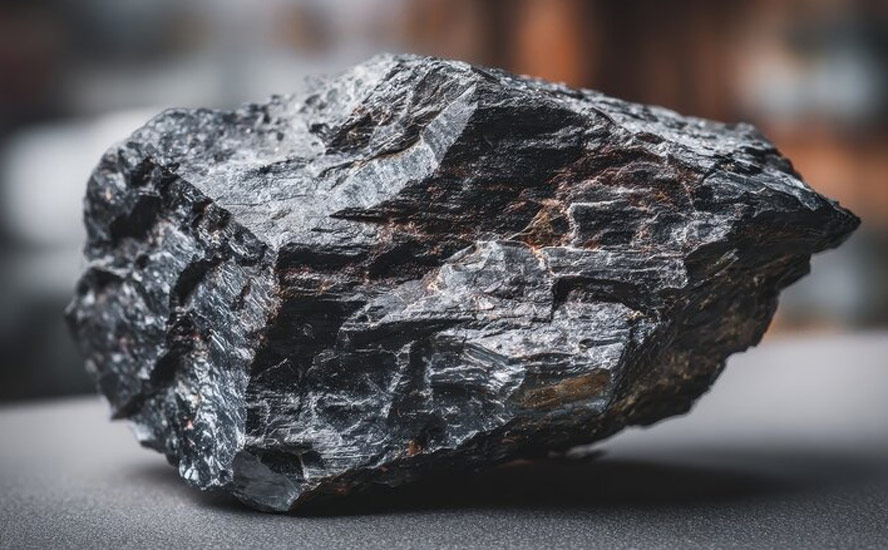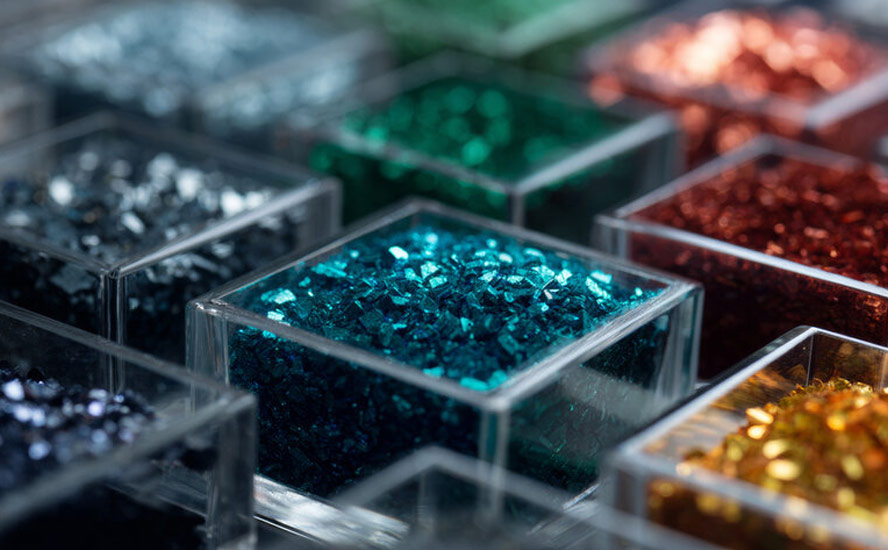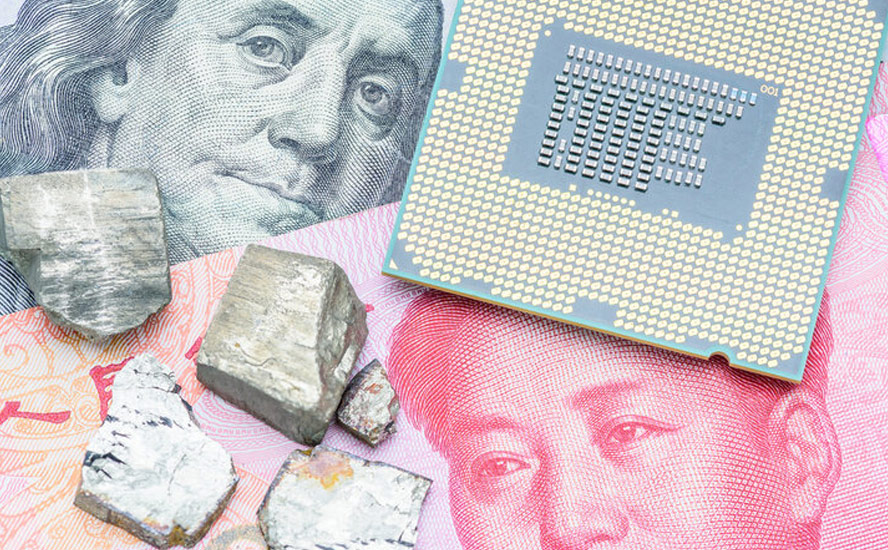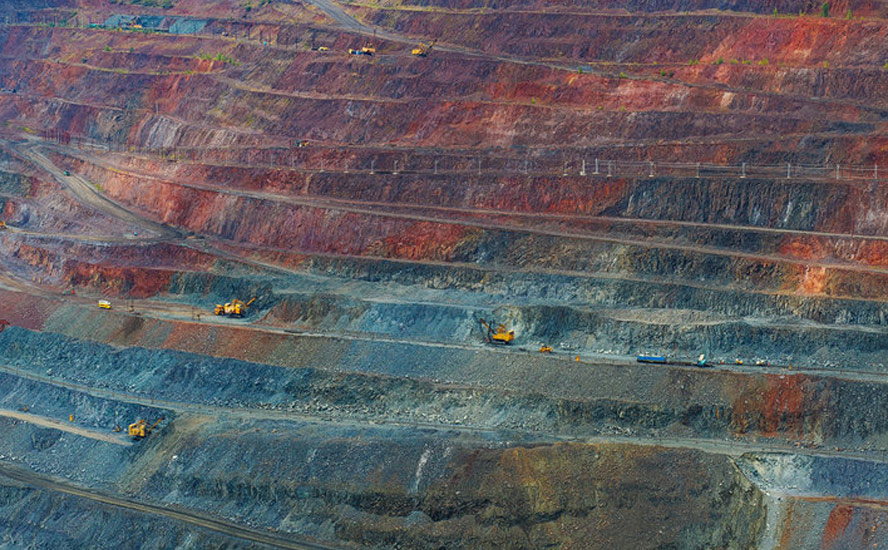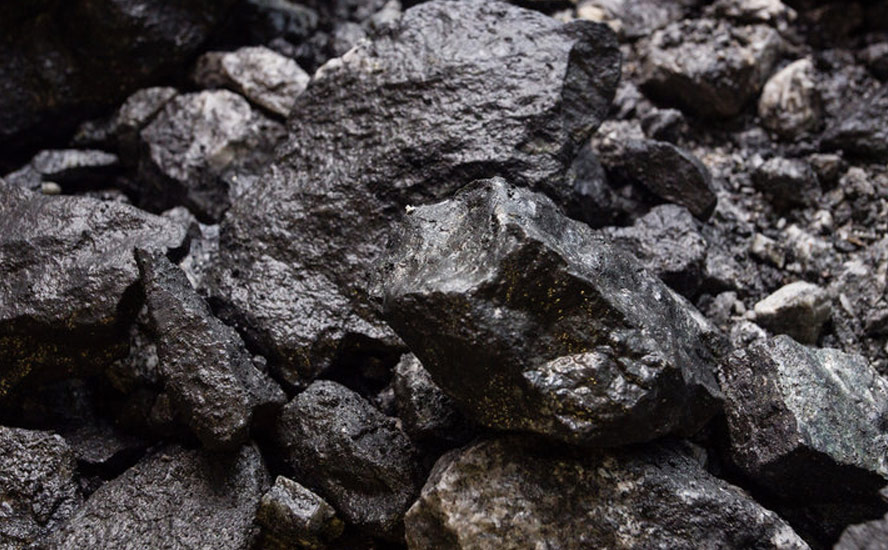EV predictions show strained metals supply

2020.01.28
One of the most prevalent current trends concerning mined commodities is the shift, driven by the effort to reduce our carbon footprint, is towards the electrification of the global transportation system.

Electrification is part of the solution to averting further global environmental damage/ collapse due to tailpipe emissions from the burning of fossil fuels in internal combustion engines. The Union of Concerned Scientists says cars and trucks account for nearly one-fifth of all US air pollution, emitting 24 pounds of CO2 and other greenhouse gases for every gallon of gas.
As sales of electric vehicles continue to climb (also electric buses, trains and e-bikes), among the metals we are most bullish on, are lithium, nickel, cobalt and copper.
Copper is utilized in an EV’s electric motor and wiring. An electric vehicle contains four times as much copper as a fossil-fueled model. We also can’t forget residential chargers and public charging stations which require a lot of copper – consultancy Wood Mackenzie estimates that by 2030 there will be more than 20 million residential EV charging stations requiring 250% more copper. One of the largest manufacturers of public charging stations is targeting a 50-fold increase by 2025.
Lithium is obviously crucial in electrification due to its use in EV batteries. There is no substitute for lithium and it is expected to remain the foundation of all lithium-ion EV battery chemistries for the foreseeable future.
Nickel is popular with EV battery-makers because it provides the energy density that gives the battery its power and range. Increasing the amount of nickel in a battery cathode ups its power/ range but, add too much of it and the battery becomes unstable, ie. vulnerable to overheating and a shortening of its lifespan.
Nickel is used in both of the dominant battery chemistries for EVs, the nickel-manganese-cobalt (NMC) battery used in the Chevy Bolt (also the Nissan Leaf and BMW i3) and the nickel-cobalt-aluminum (NCA) battery manufactured by Panasonic/Tesla.
Cobalt is a necessary ingredient in the battery cathode to provide stability and to maintain the battery’s cycle life – ie, how many times the battery can be discharged and recharged without loss of capacity.

Lately we have been writing a lot about current and expected supply crunches in several of the metals we’re following. That made us wonder, is electrification at the scale required to reduce our carbon footprint enough to make a difference even possible? Given all the current demands for them, do we have enough battery metals and copper required for the construction of electric vehicles, and all the associated charging infrastructure? Is the massive shift required to move transportation from internal combustion engine (ICE) vehicles to electrics setting ourselves up for gigantic bust, as scarcity of raw materials pushes the prices of EVs beyond the reach of the average consumer?
In this article we’re getting out our calculators and crunching the numbers.
EV predictions – low and high
Currently, less than 1% of the world’s vehicles are electric, but by 2030 they are expected to represent about 11% of new car sales, according to consultancy Wood Mackenzie in a 2019 report. In 2018 global EV sales were just over 2 million units, about 2% of 86 million total vehicle sales including EVs and ICE vehicles. 11 million EVs is over five times as many, in a decade. Will demand, and sales, be that high?

We can’t know for sure – many EV predictions appear wildly optimistic. But we got to thinking, why not take a low end and a high end, pick two target years, in the not too distant future, then see how many tonnes of metals that would require?
On the low end is UBS, whose 2017 case study report ‘UBS Evidence Lab Electric Car Teardown – Disruption Ahead?’ is required reading for anybody concerned or curious about the effects of electric vehicles on their industry.
The report “tears down” the Chevrolet Bolt, a mass-marketed, affordable electric vehicle, analyzing just about every Bolt component. Its base case scenario for EV metals demand expects 14.2 million EVs to be sold in 2025, a penetration rate of 13.7% (of global car sales)
This compares to a recent report by New York-based Investment Management, forecasting a much more ambitious 37 million units will be sold in 2025.
We decided to use that 37-million-unit figure and push it out to a more conservative 2035, for our high-end, long-term scenario, and use the UBS figure for our low-end, short-term scenario. (By the way, an in-between forecast from the oft-quoted McKinsey’s Future Mobility Initiative has global EV production at 13-18 million units by 2025 and 26-36 million by 2030. So we’re in the ballpark)
Lithium
A Tesla S with a 70kWh battery uses 63 kilograms of lithium carbonate equivalent (LCE) – the standard industry measure of lithium production which includes lithium carbonate and lithium hydroxide, both used in EV batteries. The Chevy Bolt has a 60kWh battery so the weights are comparable.
According to Fastmarkets, a specialty metals industry data provider, global lithium supply in 2019 was expected to reach 363,000 tonnes per year. Using UBS’ 14 million-EV figure, the amount of new lithium carbonate required is:
14M EVs x 63kg = 882,000,000kg (882,000 tonnes) divided by 363,000t = 2.4 yrs of 2019 production.

By 2025 demand for lithium (just for EV batteries, not counting in any other demand), at the low end of our projected EV market penetration, could hit 871,000 t/yr, leaving a whopping great shortfall, unless 508,200 tonnes of new supply comes online between now and then.
Now suppose the 14-million EV figure is light, and after 10 years of Gigafactories and EV-makers pumping out more and more EVs, the number is 37M EVs in 2035.
37M EVs x 63kg = 2,331,000,000kg (2,3331,000t) divided by 363,000t = 6.4 yrs of 2019 production.
It’s true the lithium market is currently oversupplied, at about 300,000 tonnes of demand versus 363,000 tonnes of supply. This accounts for the price slippage in the lithium market recently. Some lithium miners are pulling in their sails, holding off on expanding operations until better prices return. Albemarle and SQM, the two biggest lithium producers, are both delaying plant expansions.
Australia’s Mineral Resources (ASX:MIN) said earlier this month it is pausing operations at its Wodgina lithium project, a joint venture with US-based Albemarle, due to “challenging lithium market conditions.”
Market conditions are difficult primarily for two reasons: low prices due to oversupply from Australian hard-rock lithium producers, most of whom sell their spodumene concentrate to China; and reduced Chinese demand for lithium, after Beijing cut EV subsidies that made electric vehicles more affordable.
Demand has also been dented by bottlenecks in Chinese chemical conversion facilities, that make lithium hydroxide from spodumene concentrate.
A few years ago, Australian lithium producers thought they could make a profit mining pegmatites (lithium host rock) despite the higher capital and production costs of this “hard rock” lithium mining. Many ramped up production to take advantage of record-high prices, creating a supply overhang.
In 2017 top producer Chile lost its crown to Australia, home to the largest hard-rock lithium mining operation in the world, Greenbushes.
According to Benchmark Mineral Intelligence, by mid-2018, spodumene had overtaken brine as the leading source of lithium chemical feedstock production. From just one spodumene mine in 2016 – Greenbushes in Australia – the number of active hard-rock mines grew to nine by 2018 year-end.
Since then, the $400 plunge in spodumene prices has really hurt Australian lithium miners. They might be wishing they hadn’t all jumped on the spodumene wagon at the same time.
A more “political” obstacle is the social unrest happening in Chile, along with a newly invigorated resource nationalism, that has spooked would-be foreign investors. A uniform royalty and tax regime is also lacking.
Since lithium prices started climbing in 2014, Wealth Minerals is the only new player to receive permitting required to complete exploration work in the Salar de Atacama, having partnered with Chilean state mining company Enami.
The second largest producer also has problems with water. Chile’s underground lithium reservoirs need to be recharged by rainfall and snow melt from the Andes, but a study found more water was leaving the salar than returning, prompting water restrictions.
Neighboring Argentina is considered to be a risky place for mining companies to do business. Despite the end of 12 years of leftist rule, a shaky economy and a lack of regulatory clarity has meant the mining industry and its investors are hesitant.
In September thousands of protesters hit the streets of Buenos Aires demanding the government take action to address the deepening economic crisis, amid reports of rising hunger.
Also, lithium grades in Argentina are low, around 600 milligrams a liter, compared to Chile’s Salar de Atacama – the main production area – which average 863 mg/l.
How about Bolivia, the third side of the “lithium triangle” stretched across Chile, Argentina and Bolivia? Lithium contained in Bolivian salars are higher in altitude, not as dry, and contain more impurities, magnesium and potassium, than in neighboring Chile, making the extraction process much more complicated, and costly.

Recently a German company, ACI Systems, tried to kickstart lithium mining in Bolivia through a joint venture with state-owned lithium company YLB. The agreement had them planning to install four lithium extraction plants in the Salar de Uyuni – known to hold the world’s second largest lithium deposit – but Bolivia canceled the deal following a change of leadership at YLB, following the resignation of President Evo Morales.
That 737,000 tonnes of new lithium supply required to meet demand in 2025? It looks to be in serious jeopardy. Chile has become consumed with resource nationalism as it protects its national treasure, lithium, by denying processing plant expansions and restricting water usage. Lithium miners have joined in solidarity with protesters in country-wide work stoppages, as Chile is gripped with a wave of social unrest due to perceived and actual inequality. Mining unions in Chile frequently strike and there is no reason to suggest they won’t continue to walk picket lines in support of fellow workers.
The country has lost marketshare to its competitors; it now produces about 20% of the world’s lithium compared to 36% four years ago.
It’s no better in Bolivia, which just canceled a German-Bolivian joint venture, or Argentina, whose economy is a basketcase. Australia’s lithium miners are hurting due to low spodumene prices and have already started cutting production in response. Canada’s upstart Nemaska Lithium recently filed for bankruptcy.
With prices for hard-rock lithium mines low until the supply overhang can get sopped up, it falls to lower-cost lithium brine and claystone operations to meet the industry’s long-term supply challenges. But as we’ve just outlined, there are problems in South America’s salt flats, too.
Nickel
In September 2019, the average new passenger EV contained 14 kilograms of nickel in its battery, an increase of 20% over October 2018, according to Adamas Intelligence’s latest ‘EV Battery Nickel Monthly’ report. 2018 nickel production was 2.3 million tonnes.
14M EVs x 14kg = 196,000,000kg (196,000t) divided by 2.3M = 8.5% of 2018 production.
37M EVs x 14kg = 518,000,000kg/ (518,000t) divided by 2.3M = 22% of 2018 production.
Nickel deposits come in two forms: sulfide or laterite. About 60% of the world’s known nickel resources are laterites. The remaining 40% are sulfide deposits.
Large-scale sulfide deposits are extremely rare. Historically, most nickel was produced from sulfide ores, including the giant (>10 million tonnes) Sudbury deposits in Ontario, Norilsk in Russia and the Bushveld Complex in South Africa, known for its platinum group elements (PGEs). However, existing sulfide mines are becoming depleted, and nickel miners are having to go to the lower-quality, but more expensive to process, as well as more polluting, nickel laterites such as found in the Philippines, Indonesia and New Caledonia.
Nickel sulfide deposits provide ore for Class 1 nickel users which includes battery manufacturers. These battery-cos purchase the nickel product known as nickel sulfate, derived from high-grade nickel sulfide deposits. It’s important to note that less than half of the world’s nickel is suitable for the biggest growth market – EV batteries.
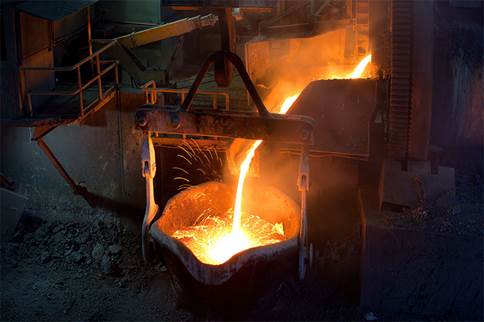
Tesla recently expressed concern over whether there will be enough high-purity “Class 1” nickel needed for electric-vehicle batteries.
According to BloombergNEF, demand for Class 1 nickel is expected to out-run supply within five years, fueled by rising consumption by lithium-ion electric vehicle battery suppliers. It’s clear that nickel is facing some growing pains since the industrial metal was burnished by its new-found use in the transportation mode of the future.
Nickel’s inroads are due mainly to an industry shift towards “NMC 811” batteries which require eight times the other metals in the battery. (first-version NMC 111 batteries have one part each nickel, cobalt and manganese).

But a lot of nickel will still need to be mined for stainless steel and other uses. Will annual world production of around 2.3 million tonnes be enough for everything? It seems unlikely. Consider that less than half of the total nickel output is Class 1 product, suitable for conversion into nickel sulfate used in battery manufacturing.
Class 1 nickel powder for sulfate production enjoys a large premium over LME nickel prices, but for miners to switch from lower-grade to battery-grade material requires huge investments to upgrade refining and processing facilities.
Last year, only around 6% of nickel ended up in EV batteries, as 70% of supply went into making stainless steel.
The nickel industry’s dilemma is therefore how to keep the traditional market intact, by producing enough nickel pig iron (NPI) and ferronickel to satisfy existing stainless steel customers, in particular China, while at the same time mining enough nickel to surf the coming wave of EV battery demand?
One possibility is to keep mining the more plentiful laterites and convert the nickel product into nickel sulfate, as the Chinese are planning to do in Indonesia.
Reuters reported on the $4 billion Chinese-led project to produce battery-grade nickel chemicals, that Indonesia hopes will attract electric-vehicle makers into the country, which is the second-largest car-maker in Southeast Asia.

However there is no simple separation technique for nickel laterites. As a result, laterite projects have high capital costs and therefore require large economies of scale to be viable. The technology for producing battery-grade nickel from nickel laterite ores is – despite being available since the late 1950s – unreliable.
High Pressure Acid Leaching (HPAL) involves processing ore in a sulfuric acid leach at temperatures up to 270ºC and pressures up to 600 psi to extract the nickel and cobalt from the iron-rich ore.
The advantage of HPAL is its ability to process low-grade nickel laterite ores, to recover nickel and cobalt. However, HPAL is unable to process high-magnesium or saprolite ores, it has high maintenance costs due to the sulfuric acid (average 260-400 kg/t at existing operations), and it comes with the cost, environmental impact and hassle of disposing of the magnesium sulfate effluent waste.
Now, considering all the challenges in increasing nickel production, due mostly to the dearth of nickel sulfide deposits and the expense and disposal nightmare of mining laterites for conversion into nickel sulfate, pile on the amount of nickel required for EV batteries.
We’re talking 8.5% of 2018’s total nickel production of 2.3 million tonnes. That works out to 195,500 tonnes – more than the combined production of Canada and the US (179,000t). Go with the high-end EV penetration scenario, 22% of total production, and the amount of nickel demanded, 518,000 tonnes, is nearly as much as Indonesia, the top producer’s output of 560,000 tonnes. One mine takes 10 to 15 years to develop. In that time is it really possible to bring online nearly as much new nickel as the current two largest producers – Vale and Norilsk Nickel – which in 2017 mined a combined 536,000t? The possibility is incredibly unlikely.
Cobalt
The average Tesla consumes about 4.5 kg of cobalt, according to Benchmark Mineral Intelligence. 2018 production of cobalt was 140,000 tonnes.
14M EVs x 4.5kg = 63,000,000kg (63,000t) divided by 140,000t = 45% of 2018 production .
37M EVs x 4.5kg = 1,665,000,000kg (1,665,000t) divided by 140,000t = 11.8 yrs of 2018 production.

According to Adamas Intelligence’s EV Battery Capacity and Battery Metals Tracker, in April 2019 the NMC 811 cathode chemistry saw a 251% increase in deployment year over year. Despite holding just 1% of the passenger EV market by gigawatt hour deployed (GWh), the percentage of 811s is expected to rise further due to the release of the Nio ES6 battery electric vehicle (BEV) and the GAC Aion S BEV, both equipped with NMC 811 battery cells from China’s CATL, the largest EV battery manufacturer in the world.
EV-makers want to reduce the amount of cobalt in their batteries because it is over twice the cost of nickel, and the battery accounts for around half the price of an EV. Therefore, cathodes with nickel-manganese-cobalt chemistries (NCA) with ratios of 8 parts nickel to one part cobalt and one part aluminum (NMC 811) are expected to be the battery of choice for EV-makers going forward.
Apart from cost considerations, cobalt is likely to attract unwanted attention to the awful conditions of cobalt mining in the DRC, the world’s largest producer, including the use of child and slave laborers; the unstable African country has made cobalt the “blood diamonds” of the EV industry.
Tech giants like Apple, Microsoft, Dell and Samsung are increasingly being asked to defend their supply chains to ensure they are sourcing cobalt responsibly. In December Cnet reported that International Rights Advocates, a non-profit, filed a lawsuit in a Washington court on behalf of 14 plaintiffs – guardians of children either killed or seriously injured in tunnel or wall collapses. The defendants in the suit, writes Cnet, are Apple, Microsoft, Dell, Tesla and Alphabet, Google’s parent company.
Because it is mostly mined as a by-product of nickel and copper, end users are at the mercy of those markets. If the price of either base metal should fall, the incentive for mining cobalt will decrease, potentially making it hard to source supply.
For all of these reasons, some industry observers think cobalt’s days are numbered, but they’re wrong. That’s because cobalt is actually the “safe” element in the battery cathode. Reducing the amount of cobalt shortens the life of the battery cell. The battery has to last at least eight years – the industry standard – if not, the owner can replace it under warranty. Those battery replacement costs would likely negate any savings gained from using less cobalt.

A lithium battery for electric vehicles has to be both strong and long-lasting, through many charging cycles. It’s mostly the nickel that gives the battery its strength, and the cobalt that gives it stability and resilience, to ensure an industry-standard 8-year lifespan.
So, while Elon Musk claims Tesla can reduce the amount of cobalt in its Tesla 3 batteries to zero, to cut costs, the reality is that cobalt is an indispensable battery ingredient.

Formerly used mostly in superalloys for jet engines and hardware, over 50% of cobalt demand now comes from the battery sector. Expect that percentage to increase, not decrease, over time.
The vast majority of cobalt resources are locked within stratiform copper deposits in the DRC and Zambia. The remaining tonnage is found in nickel-bearing laterites in Australia and Cuba. The DRC accounts for about two-thirds of cobalt supply.
Indeed no metal exemplifies “supply insecurity” better than cobalt. China is heavily invested in the DRC, as it works towards its goal of mass EV adoption. China imports 98% of its cobalt from the DRC and produces around half of the world’s refined cobalt. For that reason cobalt could easily be targeted by China for export restrictions or an embargo (same as rare earths have been threatened), which would harm end-users that depend on a reliable, price-competitive cobalt supply chain.
The demand for cobalt is now directly correlated to the growth of lithium-ion batteries and electric vehicles. According to Argus Media, the battery industry’s cobalt demand in 2018 grew 102% from 2017, to 16,629 tonnes.
Simon Moores, managing director of Benchmark Minerals, told the US Senate he thinks that cobalt demand will quadruple by 2028, as EV market penetration deepens. Benchmark projects global cobalt demand at 276,401 tonnes by 2028 – more than double the 105,000 tonnes of refined cobalt produced in 2017.
Returning to our electrification forecasts, 14 million EVs on the road by 2025 will require almost half (45%) of current annual cobalt production. The largest cobalt producer is the DRC, at 90,000 tonnes. All the other producers combined produce just 43,000 tonnes – ie. <63,000t required for 14 million EVs.
And that’s the low-end scenario.
Mining companies in the DRC and elsewhere will either have to significantly scale up production – notwithstanding big tech companies wanting to stay away from the “blood cobalt” DRC – or new deposits have to be found which will take several years to develop. If either fails to occur, demand is sure to outstrip supply. Cobalt prices will continue to rise – to the chagrin of battery – and EV-makers – who will pass on the higher costs to EV buyers.
Copper
Conventional gas-powered cars contain 18 to 49 pounds of copper while a battery-powered EV contains 183 pounds or 83kg. 2018 global copper production was 21 million tonnes.
14M EVs x 83kg = 1,162,000,000kg (1,162,000) divided by 21M = 5% of 2018 production
37M EVs x 83kg = 3,071,000,000kg (3,071,000) divided by 21M = 14% of 2018 production
Copper is used for electrical applications because it is an excellent conductor of electricity. That, combined with its corrosion resistance, ductility, malleability, and ability to work in a range of electrical networks, makes it ideal for wiring. Among electrical devices that use copper are computers, televisions, circuit boards, semiconductors, microwaves and fire prevention sprinkler systems.

In telecommunications, copper is used in wiring for local area networks (LAN), modems and routers. The construction industry would not exist without copper – it is used in both wiring and plumbing. The red metal is also used for potable water and heating systems due to its ability to resist the growth of water-borne organisms, as well as its resistance to heat corrosion.
EVs contain about four times as much copper as regular vehicles.
Copper is a crucial component for auto-makers because it is a fraction of the cost compared to silver and gold, which also conduct electricity. There is about 80% more copper in a Chevy Bolt compared to a Volkswagen Golf; an electric motor contains over a mile of copper wiring. According to Visual Capitalist, by 2027, copper demand for EVs is expected to rise by 1.7 million tonnes – almost the entire copper production of China in 2017.
Notable and likely unknown to most people is the amount being invested in public charging infrastructure, to deal with drivers’ range anxiety.
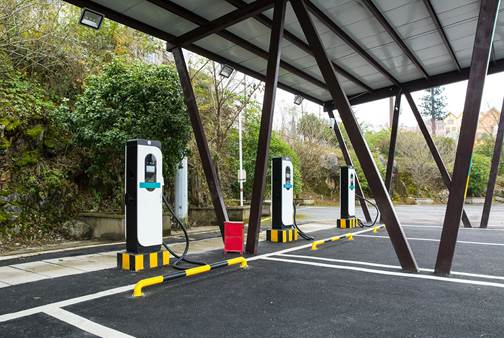
Wood Mackenzie states that US utilities have invested nearly $2.3 billion in EV charging infrastructure. The consultancy predicts that by 2030 there will be more than 20 million (residential) charging points consuming over 250% more copper than in 2019.
With each residential charger using about 2 kg of copper, that’s 42 million tonnes, or double the current amount of copper mined in one year.
One of the largest manufacturers of public charging stations, ChargePoint, is targeting a 50-fold increase in its global network of loading spots by the mid-2020s. A Level 2 charging station requires 7kg of copper, a DCFC station uses 25kg.
How are we going to find that much more copper? As we have written about extensively, copper is facing a supply crunch.
The base metal is heading for a supply shortage by the early 2020s; in fact the copper market is already showing signs of tightening – something we at AOTH have covered extensively.
Supply is tightening owing to events in Indonesia and South America, where most of the world’s copper is mined.
Copper concentrate exports from Indonesia’s Grasberg, the world’s second biggest copper mine, have plunged dramatically as operations shift from open pit to underground.
Major South American copper miners have also been forced to cut production. State-owned Codelco has said it will scale back an ambitious $40-billion plan to upgrade its mines over the next decade, after reporting a drop in earnings, a prolonged strike at Chuquicamata and lower metals prices. The world’s largest copper company also said it will reduce spending through 2028 by 20%, or $8 billion.
Shipments from BHP’s Escondida mine were expected to drop by 85% in 2019 due to operations moving from open-pit to underground. The largest copper mine on the planet is expected to take until 2022 to re-gain full production.
These cuts are significant to the global copper market because Chile is the world’s biggest copper-producing nation – supplying 30% of the world’s red metal. Adding insult to injury, for producers, copper grades have declined about 25% in Chile over the last decade, bringing less ore to market.
Exacerbating falling inventories, grades and copper market tightness, Chinese smelting companies have reportedly indicated they will cut smelter output this year, burdened by low fees they charge mining companies to process copper ores.
Meanwhile demand for copper keeps going up and up. Copper products are needed in homes, vehicles, computers, TVs, microwaves, public transportation systems (trains, airplanes) and the latest copper consumable, electric vehicles.

Consider the amount of copper needed to fix the global infrastructure deficit.
According to the American Society of Civil Engineers (ASCE), the US needs to spend $4.6 trillion between 2016 and 2024 in order to upgrade all its infrastructure to an acceptable standard. But only $2.6T has been earmarked, leaving a funding gap of $2 trillion.
Infrastructure is the physical systems – the roads, power transmission lines and towers, airports, dams, buses, subways, railways, ports, bridges, power plants, water delivery systems, hospitals, sewage treatment, etc. – that are the building blocks, the Lego pieces, which fuel a country’s, city’s or community’s economic, social and financial development.
Economic growth necessitates building more infrastructure to meet increasing demands on power, heat, water, roads and the like. As populations grow, they need more houses, hospitals, subway lines, roads, recreational facilities, sports stadiums.
How much metal will be required to upgrade US freight and passenger rail? We can only estimate but consider the amount of copper it takes to build a high-speed train network: 10 tonnes per kilometer of track. Powerful electric locomotives contain over eight tonnes of copper, according to the Copper Alliance.
Public transit is lacking in the US compared to Canada and Europe. New subway and light-rail systems are badly needed to get motorists out of their cars. Buses will also be in high demand.
A hybrid electric bus has 196 pounds, and 814 pounds of copper go into a hybrid-electric bus, mostly the battery. The Copper Alliance states that the largest EV maker, China’s BYD, used an estimated 26 million pounds of copper in 2016.
China’s Belt and Road Initiative (BRI) consists of a vast network of railways, pipelines, highways and ports that would extend west through the mountainous former Soviet republics and south to Pakistan, India and southeast Asia.
Research by the International Copper Association found BRI is likely to increase demand for copper in over 60 Eurasian countries to 6.5 million tonnes by 2027, a 22% increase from 2017 levels.
There’s also the global 5G buildout. Upgrading cellular networks from 4G to 5G is expected to result in a vast improvement in service, including nearly 100% network availability, 1,000 times the bandwidth and 10 gigabit-per-second (Gbps) speeds. With 5G, it’s possible to download a movie in less than 4 seconds compared to about 6 minutes on 4G.
However 5G isn’t only about mobile speeds, it’s also the foundation for the “Internet of Things” that connects a multitude of industrial computer networks, and virtual reality (VR) applications across a wide swath of industries.
The result of this is that, even though 5G is a wireless technology, its deployment will involve a lot more fiber and copper cable to connect equipment, both within the radio access network domain and back to the routing and core network infrastructure. Furthermore, 5G will require many more antennas than 4G ever did. That’s why this continuous demand for faster and more efficient connectivity across the world calls for state-of-the-art cable infrastructure to make 5G possible and to break down these barriers.

Artificial intelligence is not often associated with mining, but according to a 2019 report titled ‘The Geopolitics of Critical Metals’, [AI and 3G] will form the backbone of the next “industrial” revolution and their complex systems are voracious consumers of critical materials.
In Japan, demand for copper cables is seen growing 2.6% from 696,000 tonnes in 2018 to 714,000t in 2022, and copper for rolled copper alloy products growing 6% to 690,000t during the same period, according to the state-run Japan Oil, Gas and Metal National Corporation, or JOGMEC.
S&P Global Platts quotes the chairman of the Japan Mining Industry Association saying that the demand for electric vehicles and the rollout of 5G telecommunication infrastructure will support future demand for copper, zinc, lead and nickel.
Another report by Roskill forecasts total copper consumption will exceed 43 million tonnes by 2035, driven by population and GDP growth, urbanization and electricity demand. Electric vehicles and associated network infrastructure may contribute between 3.1 and 4Mt of net growth by 2035, according to Roskill.
American lifestyle
It has been estimated that by the year 2050 our global population will reach 10 billion people.
The developing world’s urban centers are expected to burgeon, drawing 96% of the additional 1.4 billion people by 2030. Due to the overall growing global population – but especially an exploding urban population (urban populations consume much more food, energy, and durable goods than rural populations) – demand for water, food, housing, heat, energy, clothing, and consumer goods is going to increase at an astounding rate.
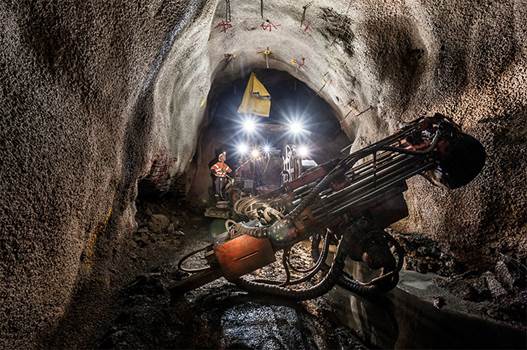
We already have one billion people out of today’s current population slated to become significant consumers by 2025.
Another 2.8 billion people will be added to the world between now and 2050. Most will not be Americans but they are going to want a lot of things that we in the Western developed world take for granted – electricity, plumbing, appliances, AC etc.
But what if all these new one billion consumers were to start consuming, over the next 10 years, just like an American? What’s going to happen to the world’s mineral resources if one billion more ‘Americans’ are added to the consuming class? Here’s what each of them would need to consume, per year, to live the American lifestyle…
One billion new consumers by 2025. Can everyone who wants to, live an American lifestyle? Can everyone everywhere else have everything we in North America have?

If we mined every last discovered, and undiscovered, pound of land-based copper, the expected 8.2 billion people in the developing world would only get three quarters of the way towards copper use parity per capita with the US.
Of course the rest of us, the other 1.8 billion people expected to be on this planet by 2050, aren’t going to be easing up, we’re still going to be using copper at prestigious rates while our developing world cousins play catch up.
Now add an extra 1.1 million tonnes of copper demanded by 14 million EVs by 2025 – just five years away – in the low-EV scenario of 14 million units. And another 42 million tonnes of copper to be deployed for the 20 million charging points predicted by Wood Mackenzie? The numbers are starting to get stupid.
Critical minerals collaboration
The mining of critical minerals is finally getting the attention it deserves after many years of neglect by Canada and the United States. The lack of a plan to build a domestic supply chain of metals to serve the clean, green economy of the future has put North America far behind China, a country that has prioritized having a ready and plentiful supply of materials deemed essential to the economy and defense of a nation.
The deficiency is a fact North American politicians have just woken up to, and a subject we at AOTH have been writing about for over a decade.
On Jan. 9, Canada and the United States announced the Canada-US Joint Plan on Critical Minerals Collaboration, to advance “our mutual interest in securing supply chains for the critical minerals needed for important manufacturing sectors, including communication technology, aerospace and defence, and clean technology,” reads a press release from Natural Resources Canada.
The announcement follows a June 2019 commitment by Prime Minister Trudeau and President Trump to collaborate on critical minerals.

Reducing dependence
In fact the Trump administration was ahead of Canada in pin-pointing the lack of domestic supply and how that poses a threat to national security.
In 2017 Trump signed an executive (presidential) order to develop a strategy to ensure a secure and reliable supply of critical minerals, within 180 days. The directive was issued the day after the US Geological Survey published an updated assessment of the country’s critical minerals resources. In its report, the USGS said of 23 minerals analyzed, the US relies on foreign supplies for at least 50% of all but two: beryllium and titanium. The list was later widened to 35 critical minerals.
What collaboration means
Cutting through the government-speak, the main points of interest to mining investors are:
- The Joint Plan will guide efforts to secure critical minerals supply chains for “strategic industries” (undefined) and defence.
- The Canadian mining sector is setting up a task force to work with Ottawa and Washington, to identify critical minerals projects and study “how to overcome some of the R&D challenges to drive down costs and be competitive with China,” the Globe and Mail reported, quoting Pierre Gratton.
- In December Canada joined the US-led Energy Resource Governance Initiative, which aims, through multiple countries, to promote supply chains for critical energy minerals such as uranium.
- Along with Canada, the US is seeking alliances with Australia, Japan and the European Union, which also fear mineral dependency on China.
- Canada supplies 13 of the 35 minerals the US has identified as critical. They are:

“This is about the U.S. wanting to make sure it has access to a reliable supply of metals for its defence industries and manufacturing sector,” Pierre Gratton, president of the Mining Association of Canada, told the Globe and Mail.
Gratton said Canada is well-positioned to benefit from collaborating with the US, and the US-Canada collaboration on critical minerals is particularly interesting to us at AOTH.
Conclusion
At the start of this article we asked a simple question: Given the current demands for copper, nickel, lithium and cobalt, do we have enough supply required for the construction of electric vehicles, and all the associated charging infrastructure? Is the massive shift required to move transportation from internal combustion engine (ICE) vehicles to electrics setting ourselves up for gigantic bust, as scarcity of raw materials pushes the prices of EVs beyond the reach of the average consumer?
The answer, in our humble opinion is while it’s within the realm of possibility (though highly unlikely) for the mining industry to meet the metals demand required by a low-EV scenario of 14 million units by 2025, anything beyond that is virtually impossible.

For lithium, there are supply problems in all the main producer countries – Australia, Chile and Argentina. China has pretty well cornered the market on nickel sulfate production, with all the nickel processing facilities it is planning for Indonesia. Even if somehow laterite nickel ores could be en masse converted to battery-grade nickel, without destroying nickel companies and the environment, at the very least nickel sulfate prices will eventually spike to unsustainable levels.
The cobalt supply is likely to get tighter as more companies shun the DRC and try to get the essential EV ingredient elsewhere. Copper’s long-term structural supply deficit plus skyrocketing demand for infrastucture build-outs, EVs, 5G networks and insatiable demand for Western-type consumer goods, will likely support higher copper prices for a long time.

As for finding new sources of supply for these four metals essential for electric vehicles, North America is a great mining jurisdiction, but we are hampered by over-regulation in both Canada and the United States. The Trudeau government’s Bill C-69, which recently became law, and critics say Bill C-69 will create more red tape, broadens the scope of the environmental assessment process and adds more consultation with the public and particularly indigenous groups.
In the US, the Republicans under Trump have proposed the Energy Resource Governance Initiative (ERGI) as part of a government-wide action plan to reduce US reliance on imported critical minerals.
The ERGI’s mandate is to share mining expertise with countries in the group. So, the United States is going to help countries like the DRC, Namibia and Brazil – all of which have been courted by and “married” to China through numerous mineral offtake agreements and loans – to discover and develop mineral deposits of lithium, cobalt and copper, presumably so they can sell more of said minerals to their lead benefactor, China!
Following the model set out by the ERGI would only accelerate China’s lead over the United States viz a viz cutting deals with foreign mining assets.
Given this asinine approach to critical minerals, Bill C-69, and a mining law proposed by Democrat Raúl Grijalva (D-Ariz.), which restricts mining in certain areas and limits leases to 20 years, we don’t hold much hope in mining getting a boost in North America.
We just don’t see the herculean ramp-up required by the mining industry to meet the needs of electrification happening. If supply continues to lag demand, EV components will get more expensive, with prices passed on to consumers, thus threatening the entire electrification plan which was to bring affordable EVs to the masses. Wouldn’t that be ironic?
Richard (Rick) Mills
subscribe to my free newsletter
aheadoftheherd.com
Ahead of the Herd Twitter
Legal Notice / Disclaimer
Ahead of the Herd newsletter, aheadoftheherd.com, hereafter known as AOTH.
Please read the entire Disclaimer carefully before you use this website or read the newsletter. If you do not agree to all the AOTH/Richard Mills Disclaimer, do not access/read this website/newsletter/article, or any of its pages. By reading/using this AOTH/Richard Mills website/newsletter/article, and whether or not you actually read this Disclaimer, you are deemed to have accepted it.
Any AOTH/Richard Mills document is not, and should not be, construed as an offer to sell or the solicitation of an offer to purchase or subscribe for any investment.
AOTH/Richard Mills has based this document on information obtained from sources he believes to be reliable but which has not been independently verified. AOTH/Richard Mills makes no guarantee, representation or warranty and accepts no responsibility or liability as to its accuracy or completeness. Expressions of opinion are those of AOTH/Richard Mills only and are subject to change without notice. AOTH/Richard Mills assumes no warranty, liability or guarantee for the current relevance, correctness or completeness of any information provided within this Report and will not be held liable for the consequence of reliance upon any opinion or statement contained herein or any omission. Furthermore, AOTH/Richard Mills assumes no liability for any direct or indirect loss or damage or, in particular, for lost profit, which you may incur as a result of the use and existence of the information provided within this AOTH/Richard Mills Report.
AOTH/Richard Mills is not a registered broker/financial advisor and does not hold any licenses. These are solely personal thoughts and opinions about finance and/or investments – no information posted on this site is to be considered investment advice or a recommendation to do anything involving finance or money aside from performing your own due diligence and consulting with your personal registered broker/financial advisor. You agree that by reading AOTH/Richard Mills articles, you are acting at your OWN RISK. In no event should AOTH/Richard Mills liable for any direct or indirect trading losses caused by any information contained in AOTH/Richard Mills articles. Information in AOTH/Richard Mills articles is not an offer to sell or a solicitation of an offer to buy any security. AOTH/Richard Mills is not suggesting the transacting of any financial instruments but does suggest consulting your own registered broker/financial advisor with regards to any such transactions
Legal Notice / Disclaimer
Ahead of the Herd newsletter, aheadoftheherd.com, hereafter known as AOTH.Please read the entire Disclaimer carefully before you use this website or read the newsletter. If you do not agree to all the AOTH/Richard Mills Disclaimer, do not access/read this website/newsletter/article, or any of its pages. By reading/using this AOTH/Richard Mills website/newsletter/article, and whether you actually read this Disclaimer, you are deemed to have accepted it.










